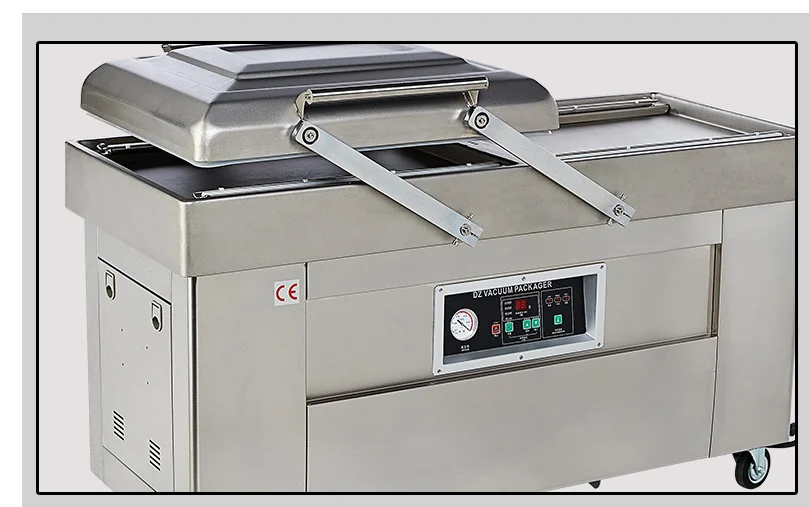Efficient Packaging Solutions with Advanced Vacuum Packing Technology for Food Preservation
Dec . 05, 2024 05:04 Back to list
Efficient Packaging Solutions with Advanced Vacuum Packing Technology for Food Preservation
The Importance of Vacuum Packing Machines in Modern Packaging Solutions
In today's fast-paced world, the way we store and transport food products has undergone significant transformations. Among the innovations that have revolutionized packaging and preservation methods, vacuum packing machines stand out as indispensable tools for both commercial and domestic use. This article explores the working principles, benefits, and applications of vacuum packing machines, highlighting their impact on food preservation and beyond.
Understanding Vacuum Packing Technology
Vacuum packing machines operate on a relatively simple principle they remove air from packaging to create a vacuum seal around food products. By eliminating air, these machines help prevent the growth of microorganisms, reduce oxidation, and minimize moisture loss. This is essential for extending the shelf life of perishable items like meats, cheeses, and vegetables.
The process typically involves placing the food item in a plastic bag or pouch, which is then inserted into the vacuum packing machine. The machine removes the air from the bag and seals it tightly, ensuring that no air can enter. Some advanced models also include features like heat sealing to further secure the package, creating a barrier against external elements.
Benefits of Using Vacuum Packing Machines
1. Extended Shelf Life One of the primary advantages of vacuum packing is the significant increase in shelf life for food products. By creating an anaerobic environment that inhibits bacterial growth, vacuum packaging allows food to stay fresh for much longer compared to conventional methods.
2. Weight and Cost Efficiency Vacuum packing can lead to a higher product-to-package ratio, reducing shipping costs and storage space. Businesses can optimize their inventory management and minimize wastage, ultimately improving profit margins.
vacuum packing machine

3. Preservation of Nutritional Value Food preservation is not just about preventing spoilage; it's also about retaining nutritional quality. Vacuum packing helps preserve vitamins and minerals, ensuring that consumers receive the maximum health benefits from their food.
4. Flavor and Texture Preservation The vacuum-sealing process prevents moisture loss, retaining the original flavor and texture of food items. This is crucial for chefs and food enthusiasts who want to maintain the quality of their ingredients.
5. Versatility Beyond food storage, vacuum packing machines are versatile tools used for various applications, including sous-vide cooking, marinating, and even non-food items like clothing, documents, and tools. This wide range of uses makes them a valuable addition to any kitchen or storage facility.
Applications in Various Industries
While vacuum packing machines are predominantly associated with the food industry, their applications extend to various sectors. In the culinary world, restaurants and chefs utilize vacuum packing for sous-vide cooking techniques, allowing for precise temperature control during cooking. Additionally, in food manufacturing, these machines are crucial for packaging bulk products efficiently and safely.
Beyond food, vacuum packing is employed in the medical field for sterilizing equipment and preserving biological samples. In the retail industry, vacuum packaging enhances the display of products, making them more appealing to consumers by reducing unsightly air bubbles in packaging.
Conclusion
Vacuum packing machines have revolutionized the way we think about food preservation and storage. Their ability to extend shelf life while preserving nutrients, flavor, and texture makes them an asset in both commercial and home kitchens. As technology continues to advance, the future of vacuum packing appears promising, with innovations that may further enhance their efficiency and versatility. For anyone involved in food production, distribution, or culinary arts, investing in a good-quality vacuum packing machine is a wise decision that yields benefits far beyond mere convenience. Embracing this technology allows us to enjoy fresher food, minimize waste, and contribute positively to our overall food management practices.
-
Hot Sale 24 & 18 Door Rabbit Cages - Premium Breeding Solutions
NewsJul.25,2025
-
Automatic Feeding Line System Pan Feeder Nipple Drinker - Anping County Yize Metal Products Co., Ltd.
NewsJul.21,2025
-
Automatic Feeding Line System Pan Feeder Nipple Drinker - Anping County Yize Metal Products Co., Ltd.
NewsJul.21,2025
-
Automatic Feeding Line System - Anping Yize | Precision & Nipple
NewsJul.21,2025
-
Automatic Feeding Line System - Anping Yize | Precision & Nipple
NewsJul.21,2025
-
Automatic Feeding Line System-Anping County Yize Metal Products Co., Ltd.|Efficient Feed Distribution&Customized Animal Farming Solutions
NewsJul.21,2025






